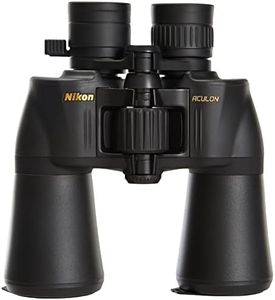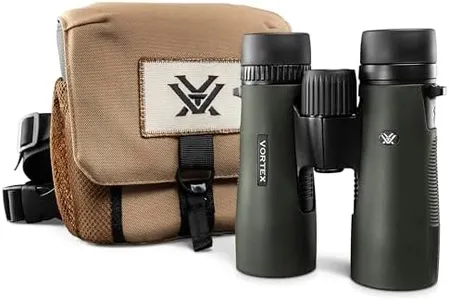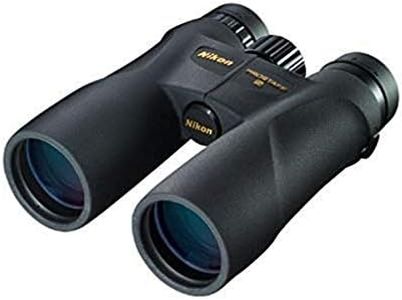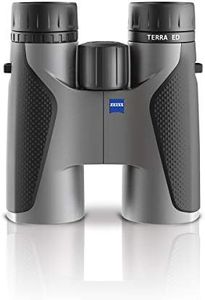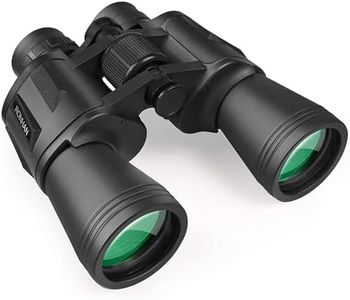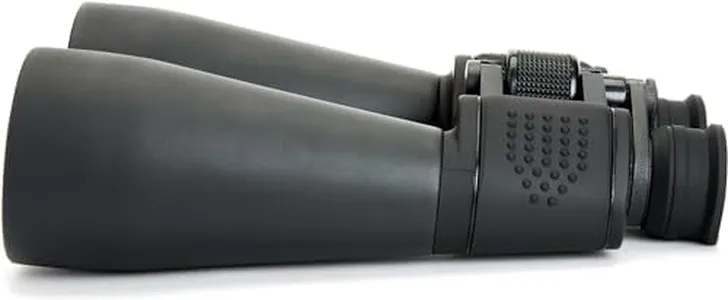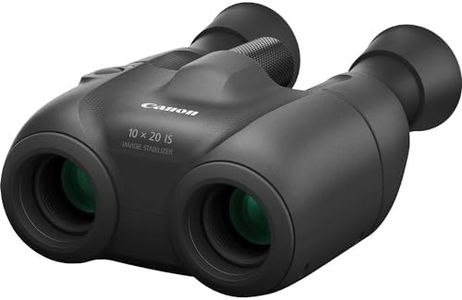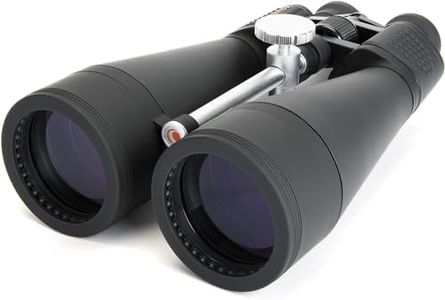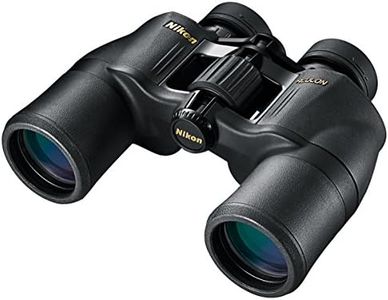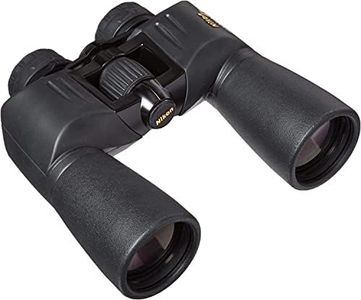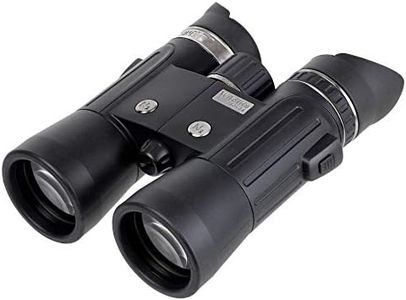We Use CookiesWe use cookies to enhance the security, performance,
functionality and for analytical and promotional activities. By continuing to browse this site you
are agreeing to our privacy policy
10 Best Long Distance Binoculars
From leading brands and best sellers available on the web.Buying Guide for the Best Long Distance Binoculars
When choosing binoculars for long-distance viewing, it's important to focus on features that allow you to see far away objects clearly and comfortably. The right pair will depend on what you plan to use them for—like birdwatching, stargazing, or watching sports from the stands. Understanding the main specifications will help you make a choice that fits your needs so you can enjoy crisp, detailed views even at great distances.MagnificationMagnification tells you how much closer the binoculars can make things appear compared to the naked eye. For long-distance viewing, you generally want higher magnification, like 10x or even 12x. However, as magnification increases, the field of view narrows, and slight hand movements become more noticeable, making the image shakier. If you often observe very distant objects, higher magnification is helpful, but for long sessions or moving targets, something lower may be easier to handle. Think about how steady your hands are and whether you'll use a tripod when selecting the right magnification for your needs.
Objective Lens DiameterThe objective lens diameter (measured in millimeters) is the size of the lens at the front of the binoculars. Larger diameters (like 42mm, 50mm, or even more) let in more light, which improves image brightness and clarity, especially at long distances or in low light conditions like dusk or dawn. Larger lenses also mean heavier binoculars, so if portability matters, you may want to strike a balance between image quality and weight.
Field of ViewThe field of view, usually measured in feet at 1000 yards or meters at 1000 meters, tells you how wide an area you can see through the binoculars. For long-distance binoculars, higher magnification usually means a narrower field of view. If you want to track moving subjects or scan wide areas, a wider field is beneficial, but if your main goal is to focus on distant, stationary objects, a narrower field can be acceptable.
StabilizationImage stabilization is a feature that helps reduce shake and blur caused by hand movements, which is more noticeable at higher magnifications. Some binoculars have built-in stabilization technology that electronically steadies the view. If you expect to use binoculars handheld at high magnifications or for extended periods, stabilization can make a big difference in comfort and image clarity. If you use a tripod, this feature might be less crucial.
Weight and SizeLong-distance binoculars tend to be larger and heavier, especially those with big objective lenses. Think about how and where you’ll be using them—if you’ll be carrying them for long distances, or if you need to quickly take them out and use them, weight and size matter. Light and compact models are easier to handle on the go, while heavier models often provide better image quality but are best for use in fixed positions or with a tripod.
Eye ReliefEye relief measures how far your eye can be from the eyepiece while still seeing the full image. This is particularly important if you wear glasses. Longer eye relief (typically above 15mm) is more comfortable for eyeglass wearers and for extended viewing sessions. If you plan on using the binoculars for hours at a time or wear glasses, check this spec to ensure comfortable use.
Waterproofing and DurabilityIf you’ll be using your binoculars outdoors, look for features like waterproofing and rugged construction. Waterproof binoculars are sealed to keep out rain, moisture, and dust—important for reliability during outdoor adventures. More durable, shockproof designs can withstand bumps and drops, which are likely to happen during active or on-the-go use.

